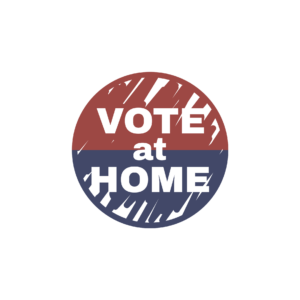Mailed-Out Ballot Estimation Tracker (MOBET) will provide key insights into 2022 election.
Today the National Vote at Home Institute (NVAHI) launched a new tool to help journalists, legislators, elections officials and the public forecast the likely level and impact of mailed-out ballots for the 2022 general election.
In the 2018 midterms, the US Election Assistance Commission reported about 42 million mailed-out ballots issued, with about 30 million of them returned. Returned mailed-out ballots constituted roughly 25% of all votes cast that year.
Our initial forecast (as of 10/14): Mailed-out ballot activity will increase at least 40% in 2022 versus 2018 levels – to an estimated 60 million mailed-out, with over 42 million returned.
Vote at Home’s MOBET information tool relies on official data originating from state and local election officials, some of it compiled by trusted sources including the U.S. Elections Project. (See Methodology below)
The MOBET tool presents mailed-out ballot totals – and eventual return rates – in four categories:
- 9 “Vote at Home” (VAH) jurisdictions, where every active registered voter receives a ballot in the mail automatically for every election
- 6 “No Excuse – Single Sign-Up” (NE/SSU) states, where any voter, through a single application, can sign up to automatically receive ballots for all future elections
- 21 “No Excuse” (NE) states, where all voters are eligible to receive a ballot, but must request them for each specific election or every year
- 15 “Excuse Required” (ER) states, where most voters are ineligible to apply for a mailed-out ballot, unless they meet a specific legally acceptable excuse
Many states where the voter must request a mailed-out ballot are not yet reporting their volume of requests. So, most states’ 2022 numbers will grow over the next few weeks as more voters apply for mailed-out ballots. For the 9 VAH states, mailed-out ballot growth will primarily result from increased voter registration totals.
As of October 14, 2022, NVAHI estimates that about 18 million more ballots will be mailed out in 2022, compared to 2018 — 60 million vs. 42 million — and that if historic return rates apply, at least 12 million more ballots will be returned (42 million vs 30 million).
In addition to providing 2018 benchmark information and showing current 2022 totals of mailed-out ballots, the table below includes estimates for eventual 2022 mailed-out ballots sent and return rates based on NVAHI research. (M = millions
State Group (*see key below( | Registered Voters as of 10/14 | Percent of total US registered voters | 2022 mailed-out ballots to be sent as of 10/14 | 2022 Estimated mailed-out ballots sent – on 11/8 | 2022 Estimated mailed-out ballots cast (turnout %) | 2018 mailed ballots sent out | 2018 mailed out ballots cast |
|---|---|---|---|---|---|---|---|
Vote at Home (VAH) | 38.7M | 18.1% | 38.7M | 39.6M | 25.7M (65%) | 26.4M | 17.1M |
No Excuse – SSU | 29.6M | 13.9% | 4.5M | 5.8M | 4.3M (74%) | 4.4M | 3.3M |
No Excuse for all | 79.5M | 37.3% | 10.6M | 12M | 10.2M (85%) | 9.1M | 7.8M |
Excuse Required | 65.5M | 30.7% | <0.1M | 2.6M | 2.3M | 2.5M | 2.3M |
Totals | 213.2M (~215M expected by 11/8) | 100% | 53.8M | 60M | 42.6M (71%) | 42.2M | 30.4M |
*VAH = CA, CO, DC, HI, NV, OR, UT, VT, WA
*No Ex-SSU = AZ, IL, MD, MT, NJ, VA
*No Ex = AK, FL, GA, ID, IA, KS, ME, MA, MI, MN, NE, NM, NC, ND, OH, OK, PA, RI, SD, WI, WY
*Ex Req.= AL, AR, CT, DE, IN, KY, LA, MS, MO, NH, NY, SC, TN, TX, WV
If the 2022 turnout rate matches 2018, that will equate to about 118 million votes cast, so mailed-out ballots will account for 35%.
That 35% is a remarkable jump from 25% just four years ago, this time with no COVID driver.
Finally, it is interesting to see how policy drives behavior.
On average, mailed-out ballot utilization levels are:
- Only about 4% of voters in Excuse Required states
- That jumps almost 4x to 15% of voters in No Excuse states
- And it jumps almost 5x to 20% of voters in No Excuse – Single Sign-up states
Better mailed-out ballot access policies are welcomed and embraced by voters.
Methodology:

